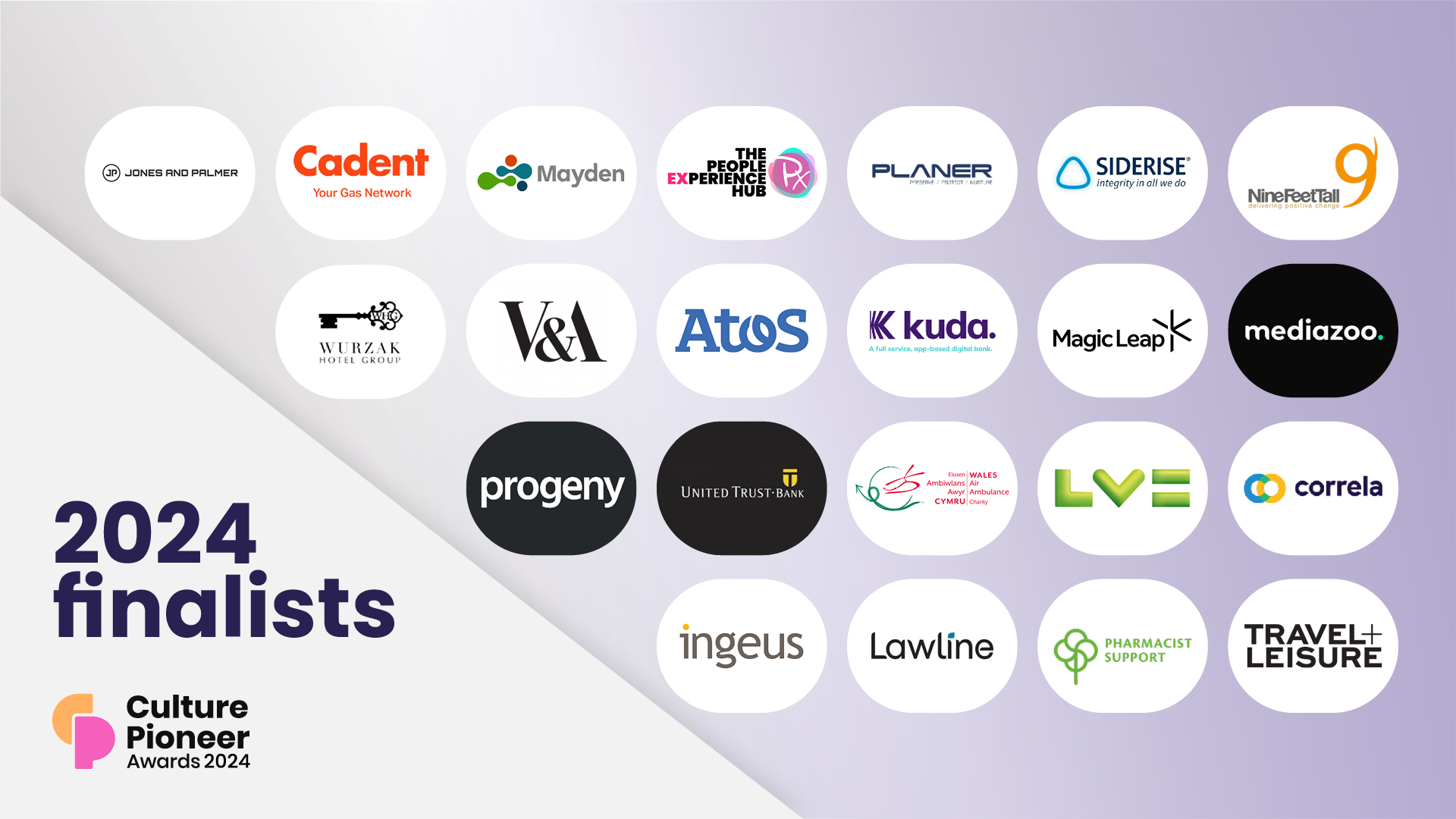Investors in People - a vehicle for change
by Adrian Egglestone
If you think Investors in People is simply a badge to be achieved then I would strongly recommend you don’t bother. The kudos has gone and the effort involved is disproportionate to the return you get from the badge. However, if your organisation has a genuine need to improve its performance and realises this needs a fundamental review of its people, policies and procedures, then I would recommend you take a look at the IIP standards.
Towards the end of 1996 the Co-operative Group (then called the Co-operative Wholesale Society or CWS) appointed a new Chief Executive, Graham Melmoth. When he took over the new chief realised there were issues to be addressed. The organisation, essentially a group of different businesses covering agriculture, engineering, funerals, travel, dairies, distribution and food retailing, was a mixed bag with the dominant business, food retailing, woefully underperforming. Worse still was the lack of a clear strategy to give the organisation a sustainable future.
The four priorities launched by Graham were:
1. To improve performance - to achieve a constant level of high performance, measured against key benchmarks. With our food retail business the return on capital, sales per square foot, or whatever measure we chose, needed to improve significantly.
2. Planning - to have an effective planning process to develop and deliver a sustainable business strategy.
3. Communication - to bring greater clarity to employee communications and to promote our responsible retailer stance.
4. People - to be effective at managing people in a style compatible with our values.
The fit with Investors in People was obvious: the commitment to developing people, communicating with and involving employees, and establishing planning processes were part of the standard. This was not, however, enough to justify committing to IIP; what we saw in the standards was a vehicle for change. The problems faced by the Co-operative Group and food retail in particular required a step change in performance, and IIP would be part of the mission.
The mission was quite simple: “to be a successful co-operative business”. A useful book by Andrew Campbell, A Sense of Mission, convinced us that statements don’t a mission make. To create a sense of mission the values and strategy need to be aligned to achieve the purpose - only then would performance improve.
The theory is great, but how do you ensure that the values and strategy are translated into improved performance? What are the processes required to change an organisation’s culture and create that sense of mission? First we had to be clear on our values and our strategy and to identify the changes they required. We also decided the initial focus would be our food retail business.
The values of the Co-op are unique in that they weren’t dreamed up as part of a cultural change programme. They had existed since the Rochdale Pioneers in 1844 and were now international, common to a world-wide movement. They are self-help, self-responsibility, democracy, equality, equity, solidarity, honesty, openness, social responsibility, and caring for others.
Without going into the details of each value, it is self-evident that an organisation which genuinely applied these values would have a distinct culture and way of managing. In reality the organisation had lost sight of these values and our culture varied depending on what part of the business you worked in. In parts there was a lack of business focus and a neglect of our co-operative purpose. If our mission was to be a successful co-operative business then change was needed.
The retail strategy was equally dramatic in getting us to face reality. Our previous efforts to chase Tesco and Asda by building superstores was reversed. Our competitive strength lay in the convenience sector, where we were market leaders with our best performance, and if we moved quickly we would have a sustainable future. The second feature of our retail strategy was to recognise that our market town stores, which dominated the local market, were sustainable. In both cases however the brand needed to improve, and the marketeers started saying “people are the brand”. The convenience stores were rebadged as Co-op Welcome and the market town stores given the name of the town in which they were situated, i.e. Co-op Anytown. In both cases people were critical to the brand; when you call yourself “Welcome” then the experience has to match, and when you imply local ownership people expect to be treated differently.
With this strategy and our values the pressure to change was enormous. So like many others we used Investors in People as a vehicle of change. The report by Rajan, Chapple & Eipey, 1999, identified five of the most widely based tools for change:
The Investors in People standard
Changes in corporate vision and values
Customer perception
TQM
Competitor benchmarking
The report identifies IIP’s three key roles in change: a catalyst for change, an enabler of change, and external recognition of change.
A catalyst for change
When the Chief Executive wants the organisation to achieve Investors in People then management ask what does this mean, what do I have to do? The opportunity is one which any HR professional will grasp. Communicating the standard is the first part, but assessing where you are at present is the interesting bit. The IIP processes recommend a diagnostic audit of how the organisation compares to the standard. This is largely qualitative research which we augmented with a staff survey. The results were poor: few people understood the organisation’s purpose; there was little communication on business results; training was rated at 50% effective; managers were not viewed as supportive; recognition of effort was weak.
The culture was very traditional, with macho management style typical of retail in the 1980s predominating. Our concern was that it was not only out of sync with our values, but was not performance-focused either. To be a successful co-operative business gave us the challenge not only of being a successful business (i.e. meeting performance targets), but also of being successfully co-operative (i.e. putting our values into practice).
With a Chief Executive pressing us to achieve IIP, and with research results identifying the gap, we had our catalyst for change. Investors in People was a way of communicating the need for change and making sure that everyone was aware of the scale of the challenge.
Enabler of Change
The enabling role of IIP comes when you start to apply the criteria and ensure you have processes or actions which will produce the evidence that you meet the criteria. As an enabler Investors in People helps direct change and drive it through the organisation. This can be illustrated by the communication criterion:
“Employees at all levels are aware of the broad aims or vision of the organisation and how they can contribute to the success of the organisation.”
Within our retail business we have some 35,000 people in over 1,000 units, so achieving the criterion needs a determined effort. We rolled out values training to all staff using seminars, workshops and video briefing. It explained our history, our purpose and how the values help us achieve our purpose. Examples were produced to illustrate how the values were applied; the value of “self-responsibility” meant store teams could form their own “better group” to make improvement suggestions. The “honesty” value meant our packaging and labelling has led the industry in providing information customers want and not using photographic tricks to make products appear different from what they are. Explaining the many actions we had taken immediately gave us positive feedback from staff: people like working for an organisation that does these sorts of things.
The criterion also meant we had to improve ongoing communication, ensuring all staff knew our key performance indicators, i.e. sales, wastage and leakage. Store managers’ attitudes were important, as some still felt this information was confidential. The message went out, however, that progress to achieving IIP demanded we do this. The enabling role was beginning to make an impact.
The third key enabler I must refer to is the identifying training needs criterion:
“Training and development needs are regularly reviewed against goals and targets at the organisation, team and individual level.”
To meet this we introduced our Better Performance Process - a review process which would ensure business objective plans were set and personal development plans established. Through the process of striving to achieve IIP we have ensured these are embedded in our business.
Another enabler was the criterion on management effectiveness:
“managers are effective in carrying out their responsibility for training and developing employees”
The revised standard puts it better:
“managers are effective in supporting the development of people”
If we were to deliver our retail strategy, then customer care would need to improve. To gain this we had to show care and support for our people and help them develop their careers. The IIP criteria helped us focus on how to do this. We recognised that our management style would need to change and the Controller of Retail took up the challenge. He launched a cultural change programme carefully named Let’s Do It Better. Senior management and store management training took place and the campaign was developed.
The campaign was significant and Let’s Do It Better developed into:
1. Let’s drive up sales by focusing on our customers
2. Let’s be open in our communication
3. Let’s be effective in reviewing performance, giving recognition and applying reward
4. Let’s strive for continuous improvement
5. Let’s live our co-operative values
All of these dovetailed with IIP, only this wasn’t IIP. This was our managers’ vision of the culture they wanted to create. So the need to meet a criterion enabled us to keep our culture focused.
Two great advantages of pursuing IIP were:
a. Those managers who were inclined to develop staff and communicate effectively were now doing it in a supportive climate.
b. Those managers who were not so inclined to develop staff and would persistently resist change knew that their personal instincts were now irrelevant. They had to take steps to develop and communicate for the clear reason that they would be assessed on their effectiveness in doing so.
Using IIP as an enabler of cultural change was also a point made in the Rajan report. He summarises how culture has changed in four key areas:
from job security based on effort, to security based on performance
from benign directive leadership, to active coaching leadership at all levels
from pay based on seniority and status, to pay based on merit and result
from blind loyalty to the organisation, to strong commitment to the values
It is my belief that the Co-operative Group has gone through a similar process of changing the business culture, and as well as Investors in People being the catalyst, it has also enabled the change to become embedded. We have applied processes to meet the IIP criteria, and then worked hard to ensure they were embedded into the business, knowing their effectiveness would be assessed.
So again we used IIP as an enabler by developing processes which have taken the business forward.
A Legitimiser of Change
Unlike most retailers we have chosen to go for recognition not store by store, but region by region. A typical region has 6,000 employees and 150 stores. To date Scotland, Northern Ireland, North East and Cumbria have been recognised, and Nottingham and South East have met the standard, but need to wait for the acquired businesses in their regions to reach the standard.
The recognition of change has also played an important strategic role in how we manage HR not just in retail, but across all our business. The corporate policy for the whole of the Co-operative Group is to achieve the IIP standard, but we allow each business to develop its own processes. I have explained how this worked in food retail, and similar activity was taking place in other parts of the business. As a legitimiser of change Investors in People is a way of verifying good practice already established within the organisation and extending this good practice. With the assessment and recognition, we are able to monitor how effective the HR function is in each business and whether our management of people complies with a common standard. This enables us to report to our Board using an independent benchmark to assess each business’s effectiveness in this area. If an internal audit process is added, then we can also track progress. It is my belief that we have a powerful tool in Investors in People, provided it is used correctly.
As a badge - forget it. As a business process - it’s ideal.
Adrian Egglestone is General Manager - HR Development, the Co-operative Group
adrian.egglestone@co-op.co.uk
http://www.co-op.co.uk
More about the Co-operative Group
The CWS was founded in 1863 and renamed the Co-operative Group in 2001. It has an annual turnover of £4.7 billion. There are 1,139 retail stores, 630 Funeralcare branches, and 283 Travelcare branches. Other parts of the Group are ACC: Associated Co-operative Creameries; Farmcare: farms and farm management; Synchro: engineering and building services; Priory Motors: vehicle dealerships; The Co-operative Bank, including smile, the internet bank; and CIS: Co-operative Insurance.
Back to ICPD








